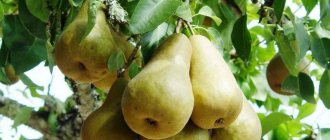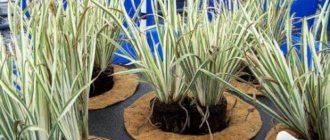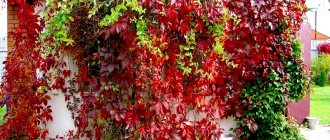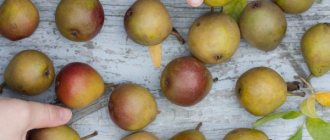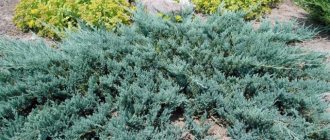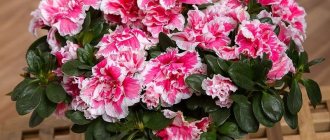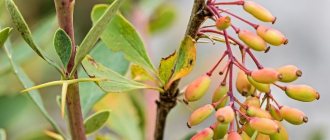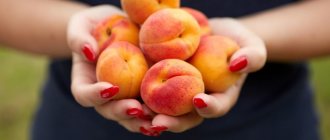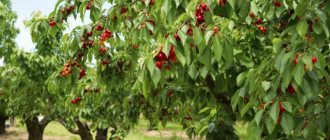Among the summer varieties of pears, Lada is one of the most popular in central Russia, widespread in the Moscow region. This demand is caused by the increased endurance of trees to sudden changes in temperature and frost, resistance to disease, productivity and precocity.
The Lada pear (pictured) provides early and consistently high yields in extreme weather conditions
We present the main characteristics of the variety in the table:
| Parameter | Characteristic |
| Culture | Pear (Pyrus communis L.) |
| Variety | "Lada" |
| Tree height | Medium-sized: up to 2.5-3 m (depending on the rootstock) |
| Precociousness | 3-4 years after planting |
| Timing of fruit ripening to the stage of removable (technical) ripeness | Summer (early summer): beginning – end of August |
| Period of consumption (storage) | The fruits are stored for 50-60 days in the refrigerator at 0 ℃ |
| Type of fruiting | Mixed: ovaries are formed on ringlets, spears and fruit twigs |
| Fruit weight | Below average: about 100-110 g |
| Productivity | High, regular; on average up to 50 kg per tree |
| Appearance of fruits | The shape is obovate. The skin is thin, smooth, shiny. The color of the peel when removed is light yellow with a faint light red blush, blurred over most of the surface. Subcutaneous dots are grayish-white, almost invisible. The funnel is missing; calyx open; the saucer is small, narrow and tuberous. The heart is oval, weakly expressed, medium in size with small brown seeds in an amount of up to 5 pieces. |
| Pulp | Yellowish-white, medium-dense, fine-grained, slightly juicy |
| Tasting assessment of taste qualities | 4.1-4.4 points (out of 5) – the taste is sourish-sweet, with a weak aroma |
| Purpose of fruits | Dessert (universal): intended primarily for fresh consumption |
| Sustainability | High winter hardiness at the level of zoned varieties. Is immune to leaf and fruit scab |
| Year of inclusion in the State Register of the Russian Federation | 1993 |
| Recommended growing regions | Northwestern (2), Central (3), Central Black Earth (5), Middle Volga (7), East Siberian (11) |
| Originator | FSBEI HE RGAU-MSHA named after. K. A. Timiryazeva (Moscow) |
History of variety development
Lada was bred by breeders from the Moscow Agricultural Academy in the last quarter of the last century. They crossed the pear varieties Forest Beauty and Olga. The result was a pear with improved characteristics of the Lada. In the early 90s, this variety was submitted for inclusion in the state register of the country, and after tests in 1993, the Lada pear was included in the State Register and zoned for cultivation in the Moscow region, the middle zone, the Central, Central Black Earth regions and the Volga region.
Harvest and storage
Pear Lada is a fast-growing variety . The first harvest is harvested in 2–4 years. The fruits of this early ripening variety ripen by the 2nd ten days of August. They can hang on a branch for some time without falling off.
The productivity of Lada is very high, sometimes it is even necessary to resort to crop rationing. One tree can bear 50 kg of excellent, juicy fruits.
Collection is best done in dry weather. The fruits are picked with the stalk, immediately sorted and placed in wooden or plastic boxes in one layer. The harvest is stored at a temperature of 0 °C for no more than 60 days.
The Lada variety is universal. You can make compote, preserves, jam, or make dried fruits from it. But fresh pears will be healthier and tastier.
Lada pear is a universal variety; you can use it to prepare many delicious preparations for the winter.
Main characteristics and description of the Lada pear variety
This fruit tree is classified as an early variety - Lada pears ripen in the second half of July. It belongs to standard varieties, so the height of an adult tree does not exceed 3-3.5 m. In young trees, the crown shape is funnel-shaped with medium density, but with age the crown of these fruit trees becomes pyramidal.
Pear Lada - photo
The main trunk of the tree has a smooth gray bark; the skeletal branches have a lighter color. The shoots are located at an acute angle to the central trunk, powerful and strong, well leafy, slightly curved, their bark has a darker brownish tint. The thickness of the shoots is less than average, the internodes are small. There are few lentils on the trunk, they are almost invisible.
The foliage is oval-elongated, with long sharp tips, and a shiny matte surface of the outer blades. The reverse side of the leaves is rough, without shine. The leaves are of medium thickness and quite elastic.
The buds are cone-shaped, with pointed and slightly elongated tips. The most rounded rejected buds bloom over time and form corymbose-shaped inflorescences.
Each inflorescence produces 6-7 large flowers with large rounded white petals and a light corolla.
Photo of Lada pear
The fruits of the Lada pear do not grow larger than average size, their weight is 115-125 g. The shape of ripe pears is regular, pear-shaped. The skin of the fruit is thin, smooth, and pale yellow in color. On the surface facing the sun, as the fruit ripens, a red blush forms. The dots that form under the skin of the pear are almost invisible.
The rustiness practically does not appear and is slightly noticeable only at the place where the fruit is attached to the stalk. There is no funnel, the size of the stalk is small. In the center of the fruit there is a seed chamber in which up to 7 brown seeds ripen.
The pulp is compacted, with an average amount of juice. The taste of ripe fruits is good; sweet pears have a slight acidic taste.
On a note!
Tasting assessment of the taste qualities of Lada pear fruits - 4.7 points out of 5 possible. The amount of sugars in fruits is 7.5%, tetratable acids are about 0.25%, dry substances are up to 25.5%, soluble substances are 7.6-7.7%.
The variety does not tolerate transportation over any distance; at room temperature, Lada can be stored for no more than 3-4 days. And at a temperature of 0 degrees Celsius, ripe pears of this variety can be preserved for 55-65 days.
Lada pear is highly resistant to frost
, therefore, even when grown in the middle zone and regions with similar climatic conditions, mature trees do not require shelter for the winter.
Characteristics of the plant, characteristics of pollination and fruiting
The tree is medium-sized, standard. At a young age, it has a funnel-shaped crown, which acquires a cone-shaped (pyramidal) shape when it enters the stage of full fruiting. The crown is not too thick, which provides good lighting and air circulation. The bark on the trunk is dark gray. Skeletal branches are gray, moderately leafy. The shoots are brown, long, slightly curved, round in cross-section, with short internodes and a small number of small lentils. The buds are slightly bent, conical, dark brown. The leaves are elongated-oval, green, smooth (without pubescence), curved in the center, with a serrated edge. Stipules are medium-sized and fall early.
Snow-white flowers are small, cup-shaped, with slightly closed petals; collected in inflorescences shaped like a corymbose brush, 5-7 pieces each.
The plant demonstrates high bud awakening and not very active shoot formation. The tree is distinguished by active annual fruiting of a mixed type, in which flower-growth buds are formed on various fruit-bearing formations: ringlets (sessile, terminal), fruitlets, spears and fruiting twigs. In this case, most of the ovaries are formed on spears and twigs. Once harvested, they continue to develop into complex fruiting branches.
In the process of pruning this pear, it is advised to remove old and weakened ringlets at the ends of the shoots, rejuvenate complex branches, shorten forked shoots, that is, try to maintain an optimal ratio between fruit formations of different types.
The Lada variety is partially self-fertile ; to increase productivity, it is recommended to plant it together with other pear trees, which can act as pollinating partners. The best of them are considered to be “Severyanka”, “Rogneda”, “Cosmic”, “Chizhovskaya”, “Otradnenskaya”, which bloom in the spring at similar times.
In the presence of additional pollinators, Lada produces consistently high yields without periodicity
According to gardeners, caring for a tree does not require any special skills, nor does it require a significant investment of time and labor. Agricultural technology for cultivating the variety is no different from the standard one: a pear planted in an area well lit by sunlight requires timely watering and fertilizing. In order for a tree to bear fruit well, from the age of two it is necessary to correctly form the crown and trim off diseased, damaged, dry branches.
"Lada" is a fast-bearing representative of the crop - it produces its first harvest in the 3-4th year after budding. Productivity indicators are high: from one tree over 7 years old you can get about 50 kg of fruit. Fruiting is abundant, annual, periodicity is not noted.
Pollinator trees for Lada pear
The Lada pear is considered a self-fertile fruit tree, but the presence of nearby pollinating trees with similar flowering periods significantly increases its yield.
The best pollinating trees for this variety are:
- Rogneda;
- Severyanka;
- Chizhovskaya;
- Space;
- Otradnenskaya.
Pear Lada - video
It is necessary to plant Lada pear seedlings in a permanent place at the same time as pollinating trees, so that their fruiting and pollination begin simultaneously.
Preparation of planting material and propagation
To purchase planting material, it is advisable to contact special centers or nurseries that breed fruit tree seedlings.
To select the right seedling, it is recommended to take into account the following parameters:
- Buds with bark . They should not be wrinkled and fairly elastic.
- Root system . Must be developed and have good branching.
- Availability of vaccination . Varietal seedlings must be vaccinated. If it is not there, then the planting material is a shoot or seedling that has nothing to do with the variety.
- Age . For planting, it is advisable to purchase one-year or two-year-old seedlings. If a young tree has a closed root system, it is permissible to purchase an older seedling.
- Barrel . It must be smooth and covered with elastic and smooth bark, on which there are no signs of disease or mechanical damage.
It is possible to propagate the Lada pear variety in several ways:
- vaccinations;
- layering;
- cuttings.
Sometimes the variety is propagated by seed. However, it requires a fairly large amount of time and effort. However, it is not always possible to achieve a positive result. This is due to the fact that the Lada variety appeared by crossing two other varieties of fruit trees. Therefore, when the seeds germinate, the seedling may not have all the properties of the mother crop.
Diseases and pests
This pear variety is highly resistant to diseases and pests
, therefore, it is practically not affected by the main diseases characteristic of other varieties of these fruit trees.
But under unfavorable weather conditions, the probability of damage to the vegetative mass of these trees by fungal diseases is high, so experts recommend carrying out preventive treatments of trees and soil with solutions of fungicides and insecticides to prevent the occurrence of diseases.
Pear varieties!
Muscovite pear Marbled pear Duchess summer pear (Williams)
Pest Control
The tree may suffer from an infestation of insect pests. The most common among them is the pear flower beetle. You can notice it during the flowering period of the tree: beetle eggs previously laid in the buds turn into larvae that actively eat the stamens, pistil and receptacle. The buds dry out completely. Young beetles feed on leaves. You can prevent damage to the pear flower beetle:
- carefully maintaining the cleanliness of the tree trunk circle;
- spraying the crown before flowering with an infusion of tansy or chamomile.
If pests have already appeared, then the plants are sprayed: Actellik - before flowering, Metaphos - after. It is also recommended to equip trees with catching belts.
Diseases and pests of pear.
The pear worm, or rather its larvae, infect the tips of the shoots and buds, leaves, and fruits. Symptom of defeat:
- sticky coating on leaves;
- blackening and curling of the leaf blade;
- the leaves fall off and the fruits lose their presentation; their taste also deteriorates.
To combat the copperhead, use:
- Nitrophen - until the buds open;
- Iskra, Konfidor, Inta-Vir - before flowering;
- Agravertine, Iskra - after the end of flowering.
The Lada pear variety is distinguished by its sweet, although not very large, fruits, with pulp that melts in your mouth. They are difficult to keep fresh, but they can be prepared in the form of jam.
Affected pear fruits.
Advantages of the variety
The main advantages of the Lada pear variety include:
- early fruit ripening, since the Lada pear is a summer variety, pears begin to ripen in the second ten days of July;
- stable annual excellent fruiting - at least 45 kg of ripe fruits are harvested from an adult pear of this variety;
- high resistance of pear to scab;
- high frost resistance of the Lada pear - mature fruit trees are not covered for the winter;
- the taste of the fruit is excellent;
- self-fertility of the variety;
- ripe pears are not prone to falling off and adhere perfectly to the branches;
- universal qualities of the harvested crop.
But you need to know about the disadvantages of this variety:
- the collected fruits practically do not tolerate transportation;
- In indoor conditions, pears are practically not stored and quickly begin to deteriorate - the presentation is lost, the fruits begin to rot.
Wintering a tree
The last stage of care is preparation for winter. Although the described hybrid is quite winter-hardy, it will need shelter.
- Carry out abundant water-recharging irrigation;
- mulch the tree trunk circle to a height of 20-25 cm;
- wrap the standard with breathable material (agrofibre, cardboard, spunbond);
- secure spruce branches around the trunk.
Experienced gardeners recommend whitening the branches with special paint. It will protect the bark from rodents and pests and will not allow the tender shoots to burn under the spring rays of the sun.
Gardeners fell in love with Lada for its unpretentiousness, sweet fruits and bountiful harvest. Planting and caring for a pear tree is simple; even beginners can handle it.
Advantages and disadvantages
Of the advantages of the Lada pear variety, it should be especially noted:
- precociousness;
- regular fruiting;
- high winter hardiness;
- excellent productivity;
- disease resistance.
The disadvantages of the Lada variety include short storage of fruits. They must be used immediately after collection.
Pear Lada: planting seedlings
Planting of seedlings of this pear should be done in the spring.
, and in the fall these fruit trees can be planted only in the southern regions, and in the central part of Russia the Lada pear does not have time to take root well before the onset of cold weather and most often freezes and dies during the winter.
The age of purchased seedlings is 2 years; older trees practically do not take root, since their root system is severely damaged during transplantation and cannot be restored in the future.
On a note!
Experts say that the Lada pear can grow well and bear fruit on any type of soil, but loam, sandstone or black soil are ideal for it.
The area for planting this pear should be located in a well-lit place, protected from gusts of cold wind. The soil should be loose, allowing moisture and air to pass through to the roots of the tree. The groundwater level should be no closer to the soil surface than 2 meters. It is highly undesirable to plant these fruit trees in lowlands or heavily humid areas.
, since this pear does not tolerate waterlogged soil.
The planting hole should be dug a couple of weeks before the intended planting. Its width should be slightly larger than the diameter of the root system so that they feel comfortable after planting. The diameter of the pit is usually about 1.0 m, and the depth is at least 0.7 m.
At the bottom of the pit it is necessary to lay a layer of nutrient substrate consisting of compost, potassium salt and superphosphate, thoroughly mixed. Then 20 liters of water are poured into the holes so that the soil subsides. After the soil has dried, trees can be planted.
In the center of the hole, a mound is formed from the soil, on which the tree is placed, and the root system is carefully straightened along its slopes. A stake 0.7 m high is driven in next to the tree, to which it will be tied.
The hole is filled with garden soil and compacted, then 20-25 liters of water are added. Then the tree trunk circle is mulched with straw or humus.
The root collar should be located 6-7 cm above the soil surface.
Planting seedlings
Reviews from gardeners
Ekaterina, 39 years old, Taganrog
Our Lada is eight years old. Last summer, a harvest of about 40 kg was harvested from it. There are practically no problems with wood. I never froze, and I practically never suffered from illness. It loves regular watering, especially during dry periods, not too often, but plentifully, especially during the period of active growth and fruit filling. The fruits ripen in early August. When the winter varieties are still completely green, this “nurse” helps our family a lot. They are the most delicious straight from the tree, but you need to be careful, because wasps settle in many fruits, eating away the juicy pulp from the inside. Like all summer varieties, they are poorly stored. But we have time to eat, and for the winter I mainly prepare dried fruits and jam. The pears are very elegant, neat, sweet and sour and aromatic. Thanks to their unique acidity, they are well suited for making fruit mousses and casseroles.
Daria, 31 years old, Moscow region
A good summer variety, because this pear is undemanding in care. Tolerates severe frosts well. The tree does not take up much space and does not grow much in height. Convenient to harvest. Each season brings up to 50 kg. Unfortunately, the shelf life is short, so immediately after picking, I put some of the fruit in the refrigerator, and the rest I put into processing. The taste of the fruit is very good, but only for 2 weeks. Overcooked pears lose their juiciness, become crumbly and tasteless.
Zinaida, 74 years old, Orel
A pear seedling with an open root system was planted in the spring. At first the tree did not take root well. A year later it began to wither. They brought fertilizer, did the pruning, watered it several times a week, and gradually everything got better. The first harvest, four years later, was small, but the fruit turned out to be full-bodied and tasty. The tree is unpretentious to the climate and soil; there are no difficulties in caring for it. In addition to the “ladushka”, its natural pollinator “Chizhovskaya” grows in our garden, which has a great effect on the yield of both. We make preparations for those with a sweet tooth every year. I especially liked the crispy and tender pear chips dried in an electric dryer. We love this variety very much, we always treat it to friends and neighbors.
Top dressing
Feeding pear trees is required according to the following scheme:
- in early spring, fertilizers containing nitrogen are applied to the tree trunk circles; trees need it for the active growth of vegetative mass and shoots;
- during flowering and active development of ovaries, the pear is fed with potassium-phosphorus fertilizers;
- in summer you can foliar fertilize pears with a solution of boric acid;
- In the fall, in the process of preparing the tree for winter, complex mineral fertilizer is applied to the tree trunk circles.
Plant care
Watering
Lada needs plenty of watering
Lada can hardly tolerate drought, so special attention should be paid to watering it. A young tree up to 3–4 years old is moistened as the soil dries. The regularity of watering depends on weather conditions and the condition of the plant itself. You can moisten the pear once a week at this time. For 1 m² of tree trunk area you will need 20 liters of water.
When the tree reaches the fruiting period, it is watered 2 times during the growing season:
- before flowering begins;
- after this stage.
This procedure can be performed in two ways:
- Sprinkling. Watering is carried out using rotating sprayers that spray drops of water.
- Using grooves. A hole 20 cm deep is dug around the tree and water is supplied into it.
Fertilizers
From the second year after planting, the pear needs to be fed. Young trees under 3 years of age are fertilized only within the trunk circle (within a radius of 1.5 m). After the start of fruiting, fertilizing is also applied between the rows.
The scheme is as follows:
- for one tree aged from 4 to 12 years, 4 g/m² of phosphorus and 6 g/m² of potassium are required;
- for pears aged 12–20 years, phosphorus consumption should be 6 g/m², potassium 8 g/m²;
- the norm for plants over 20 years old is 8 g/m² phosphorus and 12 g/m² potassium.
Fertilizers are applied in the spring - before flowering, and also in the fall - before frost, when loosening the soil in the tree trunk circle. The soil is dug up to 10–12 cm.
Trimming
Scheme for correct pear crown molding
Pruning will help shape the crown and ensure uniform lighting of the tree. The procedure is carried out in the spring - before the buds open (in March), or in the autumn - before frost (in October). The first pruning is performed immediately after planting. Shorten the central shoot by ¼ length. Then select the 4 most developed branches and cut them 20 cm below this level.
Next year, shorten the central conductor by 20–25 cm. Cut the branches by 5–7 cm. The upper shoots should be made shorter, and the lower shoots, which extend at an obtuse angle, should be made longer. Pruning in subsequent years consists of removing overgrowth and damaged branches, as well as thinning the crown.
Important! Treat sections whose diameter exceeds 1.5 cm with garden varnish (250 g of grease, 200 g of wax and 50 g of resin).
Spring pruning of pears - video
Whitewashing and mulching
Whitewashing a pear will protect the tree from pests
Before the onset of winter, the trunk and skeletal branches need to be whitened - this will help protect the tree from rodents. To prepare the solution, you need to dilute 0.5 liters of copper sulfate and 2.5 kg of lime in 10 liters of water. For the procedure, use a paint brush.
Mulching the soil in the area around the trunk will help protect the root system from freezing. Grass or sawdust is suitable for this purpose. The mulch is laid in a layer of 15–20 cm. Young trees up to 4 years old are wrapped in paper or spruce branches for the winter.
Reproduction methods
Of most propagation methods, cuttings are suitable for Lada. You can vaccinate or use layering. And yet the first option is more effective.
Cuttings
Cuttings are prepared according to the principle:
- there is a fruiting shoot;
- the presence of a green crust on the shoot;
- the buds are open, except for the top two.
Both ends of the workpieces are made at an angle of 45 degrees. Store in a cool place until roots appear. Before planting, soak in a growth stimulator.
By layering
You can use the method of propagation by air layering. The result in 90% of cases is positive, as is the growth dynamics of the seedling. The work takes place in the month of May before flowering:
- choose a healthy branch taking into account the presence of more than 3 nodes;
- count 2-3 nodes down the branch, strip the bark;
- carry out disinfection with a fungicide, treatment with a growth activator;
- prepare a plastic glass/bottle with soil mixture (sand, peat, garden soil);
- fix the workpiece on the cut (first cut the container in half);
- secure it so it doesn't fall off.
The soil in a glass of soil is moistened as needed. After 1-2 months the roots are visible. When they reach 10 cm, the cuttings are cut off and planted in a permanent place.
Vaccinations
The material is harvested according to the principle of planting cuttings. The work is planned in the spring after the snow melts. The scion format is selected according to the selected procedure scheme. All grafting methods are suitable for the Lada pear.
